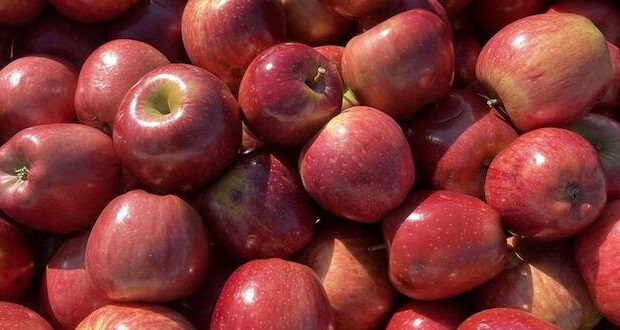Missouri and Kansas are polar opposites when it comes to their love of the apple.
The tasty fruit, a sure sign of fall, is a favorite of Missourians who visit many of the state’s 55-plus orchards, or Kansans who pick at 15 orchards during October. And for those who don’t make the annual trek, those apples will make it to the local farmer’s markets and produce aisles.
READ: Proposal would require Missouri libraries to monitor age appropriateness of materials
September and October are considered the best time to pick, or pick up, apples. This year an early freeze ended the picking season in many locations.
A new survey has detailed just how popular apples are in each of the 50 states.
Missouri is #5 for eating the most apples, according to a new report from Opal Apples, the U.S’s considered the nation’s yellowest apple with a crunch. This year, National Apple Day fell on October 21. and it is a day dedicated entirely to celebrating all things apples – and Missouri has proven its loyalty to the beloved fruit.
Kansans, perhaps because of its drier climate and fewer orchards, is dead last in apple consumption. The Sunflower state ranks 50.
According to the 2022 Apple Consumption Index – based on a survey of America’s love of apples across all 50 U.S states – below are the top 10 states in the U.S. that consume apples the most.
- Arizona
- California
- Connecticut
- New York
- Missouri
- Texas
- New Mexico
- Hawaii
- New Jersey
- Wisconsin
Key insights from the report include:
- 56% of Americans are buying apples on most grocery trips.
- 79% of apple lovers like trying new types of apples
- 45% of Americans choose apples as their number one fruit choice before any other fruit.
The word apple actually doesn’t exist in the “Tanakh,” the Hebrew Old Testament. Like many things in the western Old and New Testaments, translators stripped out Hebrew meaning, replacing them with descriptions more familiar to European minds. The fruit of temptation was most likely an apricot or a fig. Tyndale, famous for his English translation, used the word apple because that was what he was familiar with.
According to Nationaltoday.com, the apple tree spread to Europe as early as the 17th century BC; some historians believe it was during this time that the Romans cultivated and developed the apple into the larger, sweeter, more edible fruits that we are familiar with today.
–Dwight Widaman
 Metro Voice News Celebrating Faith, Family & Community
Metro Voice News Celebrating Faith, Family & Community









